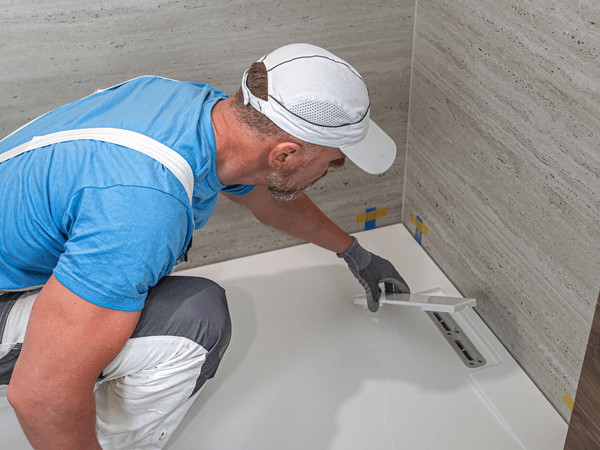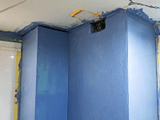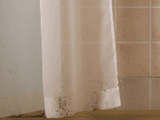Shower Repairs & Bathroom Renovations in Camberwell
Shower and bathroom services in Camberwell
We specialise in professional shower base repairs, waterproofing, and full bathroom renovations in Camberwell and surrounding eastern suburbs. Our team delivers lasting solutions for leaking showers, damaged bases, and complete bathroom transformations.
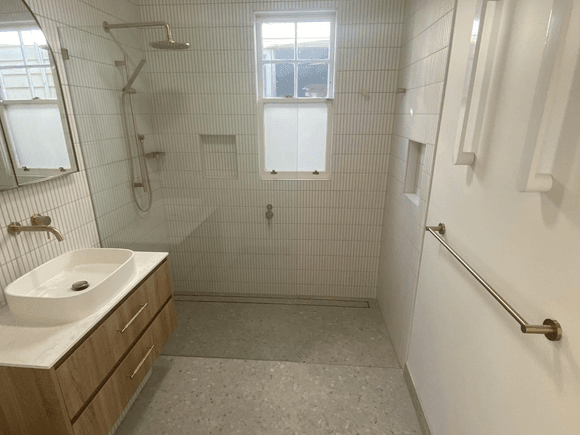

Shower base repairs Camberwell
Damage to your shower base needs attention before it worsens. We repair shower bases using proven techniques that prevent further deterioration and protect your bathroom from water damage.
Shower tile repairs in Camberwell
Cracked, loose, or damaged shower tiles need immediate attention. We repair and replace shower tiles with proper waterproofing. Stop leaks and restore your shower's appearance.
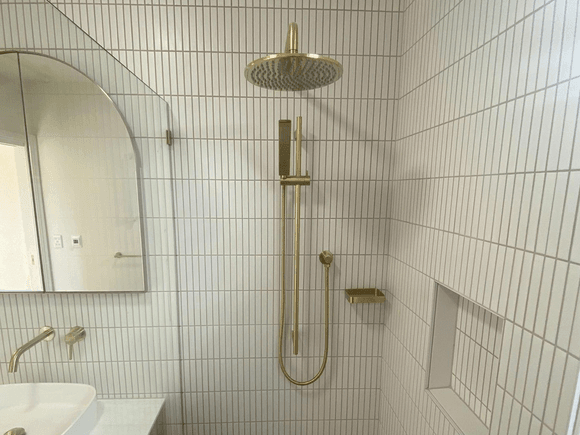

Bathroom plumbing and renovation in Camberwell
Upgrade bathroom plumbing during your renovation. We relocate pipes, install new fixtures, and ensure proper drainage. Renovation projects with plumbing done right.
Great work on unit shower
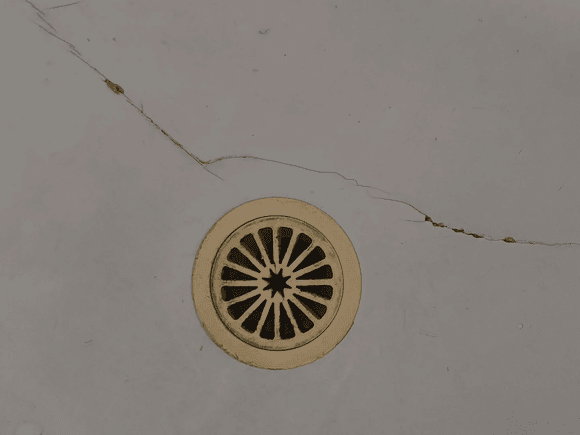
Frequently Asked Questions
How long does a shower base repair take in Camberwell?
What's the difference between a shower repair and a full bathroom renovation in Camberwell?
Can a cracked shower base be repaired without removing tiles in Camberwell?
How much does it cost to fix a leaking shower in Camberwell?
Do you service all areas of Camberwell including apartments and units?
What causes shower bases to crack and leak in Camberwell homes?
How long do shower base repairs last in Camberwell?
Can you repair fiberglass, acrylic, and stone shower bases in Camberwell?
What are the signs I need a shower repair in Camberwell?
Is shower repair better than replacement for Camberwell homes?
About Camberwell 3124
Camberwell is an established and prestigious suburb located 10 kilometres east of Melbourne's CBD within the City of Boroondara. Known for its leafy streets, heritage homes, and bustling shopping precinct, it's one of Melbourne's most sought-after eastern suburbs.
Local landmarks
- Camberwell Junction
- Rivoli Cinema
- Camberwell Market
- Camberwell Town Hall
Local history
Camberwell's story is one of early colonial settlement, rapid suburban development, and enduring prestige. Before European colonisation, the land was home to the Wurundjeri Woi Wurrung people, who lived among the creeks and open forests that once covered the area. European settlers arrived in the 1840s, attracted by the fertile soils and proximity to the growing township of Melbourne. The area was initially used for market gardening, orchards, and small farms that supplied the city with produce.
The suburb's name originates from an English connection. In the 1850s, early settler George Eastaway established the Camberwell Inn at the junction of three roads—Burke Road, Riversdale Road, and Camberwell Road. He named it after Camberwell Green in London, and the surrounding area soon adopted the same name. The intersection where the inn once stood became the heart of Camberwell's commercial district, now known as Camberwell Junction.
The arrival of the railway line in 1882 was a transformative moment. With the opening of Camberwell Station on the Lilydale line, the suburb became easily accessible to city commuters, leading to a surge in residential development. Victorian and Edwardian-style homes began appearing across the district, many of which still stand today. The new rail connections also attracted wealthier residents, establishing Camberwell's reputation as a desirable middle- and upper-class suburb. The electric tram network extended to Camberwell in the early 20th century, further enhancing its connectivity and stimulating local business growth.
By the early 1900s, Camberwell had become a well-developed township with churches, schools, and a thriving shopping strip. The Camberwell Market, established in the 1920s, became a popular weekend destination, while the Camberwell Civic Centre and Town Hall symbolised local prosperity. Residential architecture from this era—including Federation homes and California bungalows—remains a defining feature of the suburb's streetscape.
After World War II, the suburb continued to expand, though its established status limited large-scale redevelopment. Camberwell's focus shifted to maintaining its heritage and character, with many properties undergoing restoration rather than replacement. The creation of new schools, parks, and sporting facilities reflected a family-oriented community that valued stability and tradition.
In the late 20th century, Camberwell gained a reputation as a hub for arts and culture. The iconic Rivoli Cinema, originally opened in 1940 and restored in Art Deco style, remains a local landmark. Camberwell Junction evolved into one of Melbourne's busiest shopping and dining areas, balancing heritage with modern retail developments.
Today, Camberwell continues to represent Melbourne's classic eastern suburb identity—graceful, green, and community-focused. Its combination of heritage housing, excellent schools, and vibrant retail culture attracts families and professionals alike. Despite ongoing urban growth in surrounding areas, Camberwell has managed to preserve its historical character and strong sense of place.
